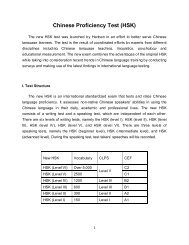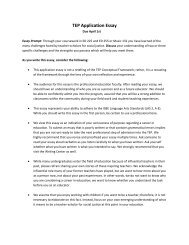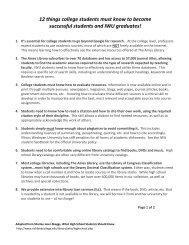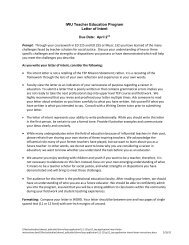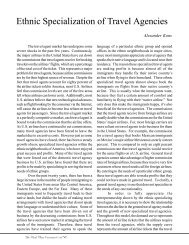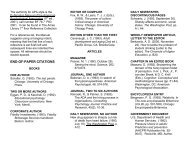One Dimensional Motion
One Dimensional Motion
One Dimensional Motion
Create successful ePaper yourself
Turn your PDF publications into a flip-book with our unique Google optimized e-Paper software.
The simplest example of motion is an object moving at constant velocity, v o , in a straight<br />
line. In this case, the change in an objects position after a period of time, t, is trivial.<br />
"x = v o<br />
t (2)<br />
When the object is accelerating (i.e. the air track is inclined, there is substantial friction,<br />
there is a big draft of air, etc.) this relationship will be more complex. If the acceleration<br />
a is uniform (i.e. does not vary ! over the time of the experiment), then the change in an<br />
objects position is:<br />
"x = v o<br />
t + 1 2 at 2 (3)<br />
where v o is the initial velocity of the object at the beginning of the interval t and a is the<br />
uniform acceleration that the object is subject to. Because the acceleration is constant,<br />
the velocity, v f , of the object ! at time, t, satisfies:<br />
v f<br />
= v o<br />
+ at (4)<br />
v f 2 = v o 2 + 2a"x (5)<br />
!<br />
where Equation (5) is derived by squaring Equation (4) and substituting in Equation (2).<br />
If the acceleration, a, is itself ! changing with time, the equations of motion are more<br />
complex. You will study the motion of the cart down the inclined air-track for which<br />
equations (3) and (5) will (probably) provide a reasonably good description.<br />
3. Procedure:<br />
The setup is depicted in Figure 1. The air track will be elevated at one end. Data will be<br />
taken using the Science Workshop software and two photogates, interpreted with the<br />
sensor “Photogates (2).”<br />
Figure 1<br />
In the first part of this lab, you will measure the duration of time, t, that it takes for the air<br />
cart to travel a distance ∆x = x(t) - x o on the air track. The distance ∆x is the distance that<br />
the cart travels between the two photogates. You will repeat this six times for six<br />
different distances, ∆x.<br />
32




